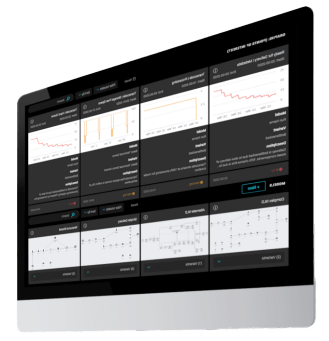
Meet Axle Enterprise Layer: Our Media Content Supply Chain Management

Smarter media logistics
Axle Enterprise Platform (AEP) is a cloud-native, AI-powered supply chain management platform. This unique system supports new and evolving operating models so you can realize smarter work practices and deliver maximum productivity benefits.
Code-free content configuration
AEP handles all multi-platform media logistics across the media enterprise, automates and priorities workflows to efficiently drive metadata capture, content discovery, analysis, validation, and processing across the entire supply chain.

Overview
AEP’s discovery tool is unique within the industry, providing a global metadata view of storage across all locations, all device types, all content types and all file types. As soon as a file is dropped into storage it is immediately discovered by the associated AEP node and processed. The metadata relating to the file and its association to the business hierarchy, when found, is seen by the user through the UI. AEP removes the need to store assets and files in an inefficient centralized model. Files can be retained in their existing source location on NAS or cloud storage until required for processing. AEP then determines the optimal technical resource to be used as part of its Next Step Workflow Manager logic.
AEP automates and priorities workflows to efficiently drive metadata capture, content discovery, analysis, validation and processing right across the supply chain, from inception through to distribution. AEP is underpinned by configuration and a business-rules-driven orchestration layer, BPM, which means workflows and processes are virtually “code free”. Workflows can be built and tested, specific to a customer, and changes can be implemented within minutes, not days or weeks.
The AEP dashboard shows the current status of single or packaged deliverables across the different periods. The status levels are fully configurable. Users can see at a glance if everything is on target for delivery, in compliance with applicable SLA criteria, and most critically, what is missing. From here, the user can navigate to view the detail of a single package and its association to the business and extended master hierarchies. From these views, a user can also see the deliveries to other platforms for the same version or for other versions related to the same Episode or Movie. An Artwork view is also available to show the thumbnails at a glance.
The Missing List more specifically addresses assets, files or metadata which are required for distribution and are either processing or missing. This view provides details of the destination, either linear or non-linear, and where that file or metadata is within the processing cycle. The List shows not only the first time the asset or file is needed but also when it is required for delivery to other end points. If required, users can expedite processing through the AEP Queue Manager. The Queue is prioritised based on required-by dates calculated by the Next Step Workflow Manager. Each workflow or process is assigned its own thread count.
AEP’s auto package and deliver workflows are designed to be automated so customers can take a completely hands off approach, or manual steps can be added where required. As the Next Step Workflow Manager controls workflow branching logic and decisions, it’s important to highlight to a user anything that is missing or stopping the creation of a package or a delivery. AEP provides a number of screens showing the status of a file, asset or metadata required as core components of a delivery. These could include for example, bumpers, warnings or promotions that will be conformed with the main source asset or it could be missing artwork or metadata.
